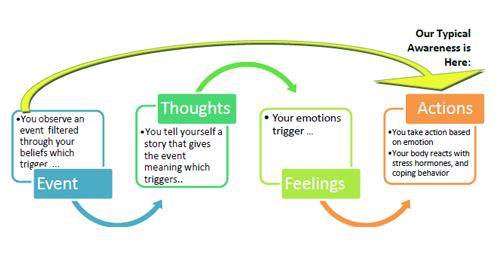*This post may contain affiliate links. As an Amazon Associate we earn from qualifying purchases.
Decisions
Athletes know the power of a fraction of a second. It can mean the difference between winning and losing. It is easy to understand this situation when looking at an outcome, such as a win or a loss, but what does this fraction of a second look like inside the mind? The photo above illustrates the mental game or decisions that transpires at a fraction of a second inside your brain. Imagine that we could look at this process in slow motion. What would it look like? Consider the following example of a female pole vaulter, Deb.
As Deb begins her first practice approach down the runway another athlete, standing on the side, accidentally drops her pole in front of the approaching athlete causing her to abruptly stop. Deb immediately reacts to the disruption with frustration and anger. Quickly her thoughts turn to how rude and unaware the other athlete was during her approach. She then starts to glare at the other athlete so she knows how upset she is and loses her focus. This can be called “The wave” because it happens fast and knocks the athlete off her center.
 Ultimately, she performs poorly at this meet and after the meet blames the other competitor for her performance. In this situation, the fraction of a second Deb made the decision to continue her focus on the other athlete and her rudeness she altered her emotion (anger) and together her thoughts and emotions affected her actions (outcome). She essentially needed to make a quick second decision about this not being personal and to put her focus (thought and emotion) to her own performance.
Ultimately, she performs poorly at this meet and after the meet blames the other competitor for her performance. In this situation, the fraction of a second Deb made the decision to continue her focus on the other athlete and her rudeness she altered her emotion (anger) and together her thoughts and emotions affected her actions (outcome). She essentially needed to make a quick second decision about this not being personal and to put her focus (thought and emotion) to her own performance.
Here is a corrected version of the pole vaulter:
She is warming up for her competition and inadvertently, another athlete drops her pole in the runway causing her to abruptly stop. In the moment, she becomes immediately aware of the situation. She has a negative thought and quickly decides to stop the thought then and there with her awareness. She reminds herself that it was an accident and takes a moment to redirect her thought regarding the event. She brings her focus back to the task at hand and uses the situation to further motivate a good performance by refocusing her mind and thus her energy. No energy is wasted and she gets back into her flow. Being able to “Switch Thoughts” is an important mental tools for athletes.

